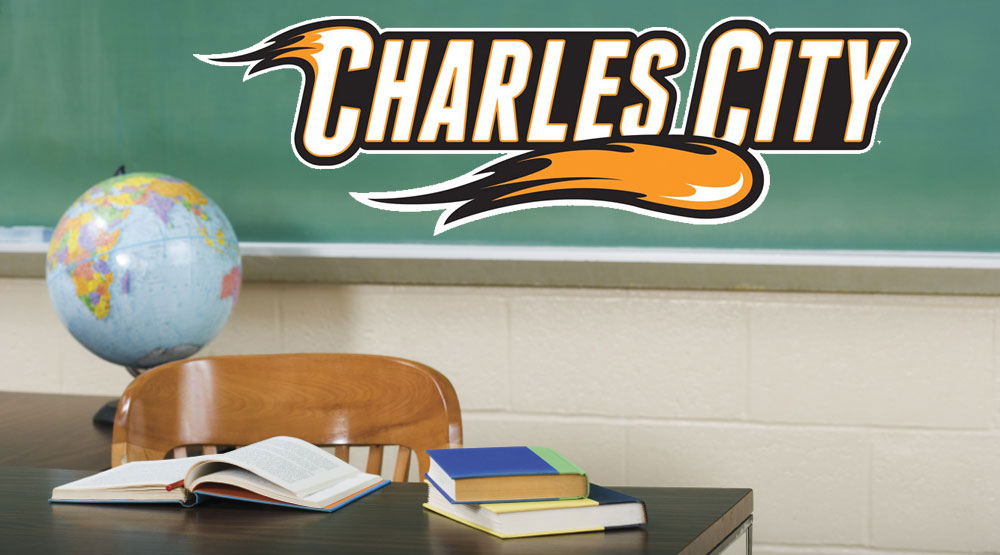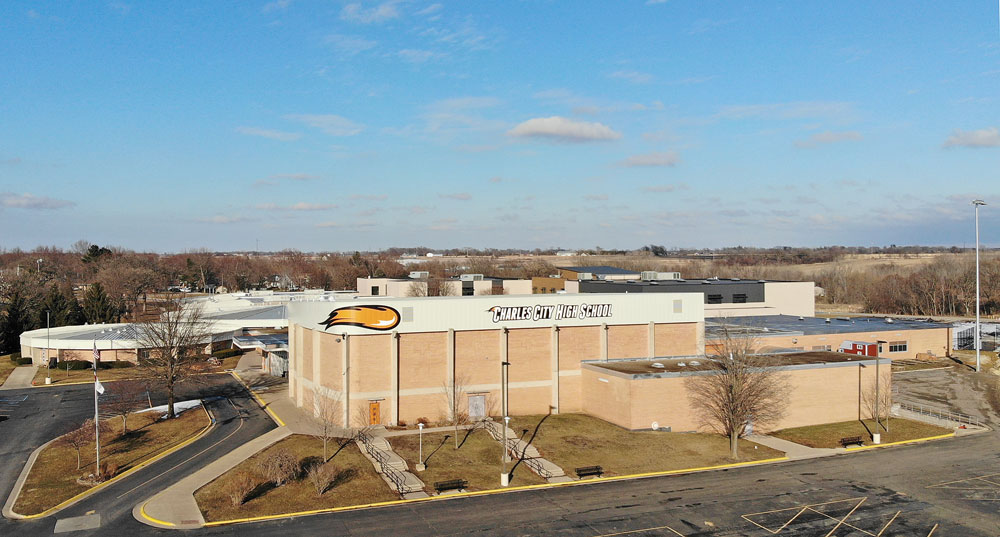Nashua-area farmer, Ames company hope self-driving equipment will be answer to several production concerns

By Bob Steenson, bsteenson@charlescitypress.com
Kyle Mehmen is looking for an answer.
The Nashua-area farmer, part of MBS Family Farms, said modern farm equipment is getting to be too big, too heavy and too expensive. Yet the size is required to be able to do the work needed on modern farms.
What if, instead of one great big tractor pulling a great big planter, you could have a swarm of little tractors pulling little planters?
But where would you find the help to run that much equipment?
Well, what if the equipment didn’t need drivers?
One of Mehmen’s soybean fields southwest of Nashua was the site for a demonstration recently. A four-bin planter mounted on a four-track autonomous type of driverless tractor made its way steadily across the field, got to the end of the row, turned around and started back.
The device was provided by Salin 247, a company based in Ames that’s putting a lot of brainpower into making a piece of equipment that ultimately is hoped to run completely self-guided by GPS signals and computer vision, be able to recharge itself, be able to refill its bins by itself, and be able to operate pretty much anytime, night or day – hence the 247 in the company’s name.
It’s not there yet. Completely electrically powered, the battery cells are kept charged by a mounted diesel generator that needs to be kept supplied with fuel. The seed bins currently have to be refilled by hand. And turning around at the end of a row during the recent demonstration at Mehmen’s farm, one of the four tracks slipped off.
“You have to disassemble the machine to get it back on,” said Dave Krog, CEO and founder of Salin 247.
“We’ve had some hardware challenges with the prototype,” Krog said. “Those are all fixable – pretty straightforward in terms of how we fix those. We’re learning about some hardware issues as we go, the tracks being one of them.”
The bigger challenge is the software that runs the system, he said.
“Ultimately our vision is to use machine learning with this. We’ve not developed that yet. That will be probably the biggest challenge, getting that in place, using machine learning for the bulk of navigation and monitoring the machine,” Krog said.
Mehmen got involved with Salin 247 because he is an investor in Ag Startup Engine, an Ames company that provides early startup money and mentorship to fund Midwest agtech entrepreneurs.
“I listened to the pitch and I was interested in it, so I reached out to them afterwards and we made a plan this winter to give it a demo,” Mehmen said about the planter prototype.
The intent originally was to plant several fields with the autonomous planter, “but this spring kind of wasn’t as cooperative as we’d like,” so they ended up planting one small plot with 8 or 10 acres, Mehmen said.
The system uses GPS and RTK (real-time kinematics) which uses a base station near the field to correct errors from the satellite GPS signals and get location accuracy down to the centimeter level.
RTK is the highest level of error correction, Mehmen said.
He said the advantage of using several of the smaller autonomous machines instead of one person-driven tractor has yet to be proven, but initially it might help out most to have several of the smaller units handle the more difficult areas while the big tractor and planter concentrates on the open, straight areas where it’s most efficient.
The biggest advantage Mehmen sees is spreading out the production.
“The thing is, you know, when you have five of these, when one breaks down only a fifth of your production goes away. If I have my big planter and there’s some sort of GPS issue or whatever, that’s 100% of my production gone until it’s repaired,” he said.
The weight of the relatively small units is also potentially a big advantage, he said, citing concerns about soil compaction with the big equipment that people may not even realize is having a cumulative effect.
Krog said the unit they brought to Mehmen’s field is the second generation.
“We started a couple of years ago, in terms of thinking about the design and all that, but last summer we built our first prototype,” he said. “We had it in a test field. We didn’t plant any farmers’ fields, but we got a lot of good feedback, learned a lot from the first prototype, got good feedback from farmers that saw it. Based on that we built this second prototype.”
The second prototype has four tracks and a little wider base than the first one, which had only two tracks.
“The biggest difference is we built this to be more modular. The first prototype was strictly a planter. This one, we can take the planter off and we can turn it into a liquid system, so sprayer, side dress machine – this summer our plan is to do a proof of concept on a liquid system,” Krog said.
“That’s a little bit of a different challenge, in terms of navigation that we’re going to do the proof of concept on. When we were planting we obviously want it straight and accurate and all that, but we’re not going to risk running over things. When you’re side-dressing or spraying you have to know where the rows are at,” he said.
“If we planted the field we know where the rows are at, or if Kyle plants with his planter and used RTK he can give us the files that tell us where the rows are at, so that’s pretty straight-forward,” Krog said. “If we don’t have that, it’s a lot more difficult to figure out where the rows are at. It’s doable, but it’s more difficult.”
Right now navigation is strictly by the GPS system, but ultimately there’s probably a place for cameras and some sort of computer vision, he said.
“If you’re in a standing crop and doing spraying or whatever, cameras could work pretty well for fine-tuning the navigation,” he said.
Salin 247 was founded by Krog, who has a B.S. in agronomy and a Ph.D. in economics from Iowa State University, his son, Ben Krog, who is a mechanical engineer, and Saeed Arabi, who is the software lead and has a Ph.D. in intelligent infrastructure from ISU.
“Saeed is an expert in computer vision, and we haven’t used that yet, so he’ll be working on that to help the navigation as well as monitoring the process,” Dave Krog said.
The goal eventually is to be able to provide smaller, lighter, lest costly equipment that will help reduce soil compaction, lower up-front capital costs as well as operating costs, help with labor issues and also contribute to a cleaner environment, Krog said.
“We’re still learning. We probably still have a couple of years to learn. We want to commercialize even next year, but it will be under more of a custom farming model as opposed to selling the machines,” Krog said.
“Ultimately we want to sell the machines. But even if we sell the machines there’s probably an ongoing level of involvement in terms of monitoring and data and things like that. We’re not going to just hand Kyle 27 machines and walk away. There’s probably going to have to be some support.”









Social Share